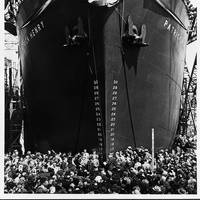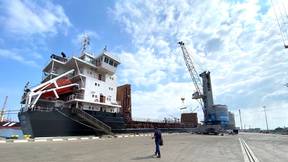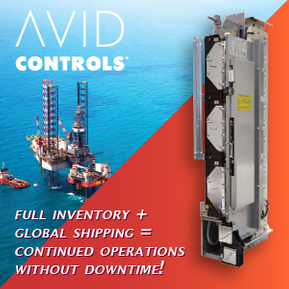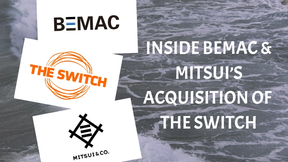Ugly Ducklings & Steaming the Way to Victory in WWII

The design and construction of WWII Liberty cargo ships revolutionized shipbuilding by overhauling the blueprint process and standardizing on commonality of parts, welding, pre-fabrication and assembly line construction. Give me Liberty, or give me death!” a rallying cry of the Revolutionary War, got a second act in World War II. “Built by the mile and chopped off by the yard,” Roosevelt promised the no-frills Liberties would form a “bridge of ships” across the Atlantic. And they did. An exaggeration perhaps, but in truth, the Liberty wasn’t much to write home about.
United Seamen’s Service Marks Anniversary
The world and the American maritime industry have changed dramatically since one of America's darkest hours, World War II, when United Seamen's Service was born to aid exhausted, wounded and battle-traumatized merchant seafarers in faraway places and unsafe harbors. It was 1942, 65 years ago, when President Franklin D. Roosevelt and the maritime unions and management recognized the need to provide havens and facilities in more than 125 worldwide locations for rest, recreation and safety for those seafarers who carried troops and war materials to ports in the war zones. Today, while war zones still dot the world, technology has changed the way shipping does business.
United Seamen’s Service Marks Anniversary
The world and the American maritime industry have changed dramatically since one of America's darkest hours, World War II, when United Seamen's Service was born to aid exhausted, wounded and battle-traumatized merchant seafarers in faraway places and unsafe harbors. It was 1942, 65 years ago, when President Franklin D. ports in the war zones. Today, while war zones still dot the world, technology has changed the way shipping does business. Small, run-down harbors where ships stayed in port for weeks at a time are today sprawling clean computer-run facilities where the vessels may turn around in less than a day. Nevertheless, USS services are still needed in the eight strategic locations where the mission is continued and the commitment to the fourth arm of defense remains a constant.







